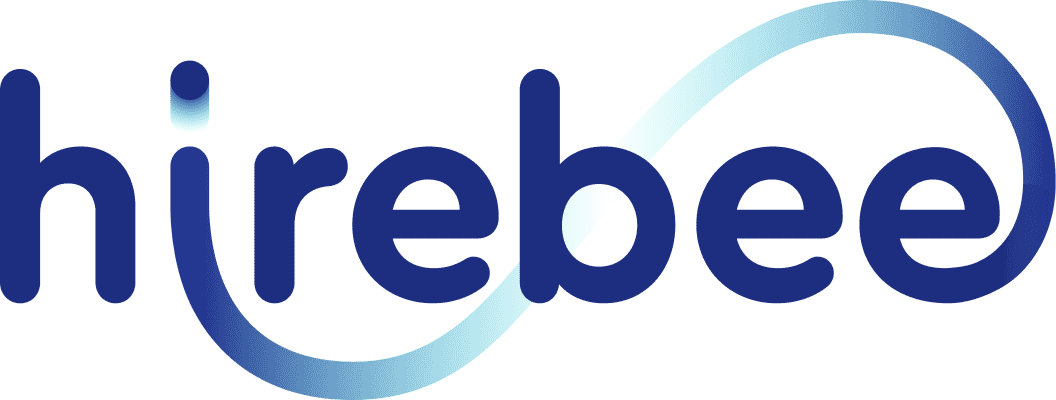Table of Contents
ToggleWhat is Agile HR?
Imagine a world where HR is no longer bogged down by rigid processes, annual reviews, and a one-size-fits-all approach to managing employees. Instead, think of a dynamic, flexible system where HR teams quickly adapt to new challenges, make decisions on the fly, and continuously improve based on real-time feedback. This is the essence of Agile HR — a progressive, adaptive approach that aligns HR practices with the fast-moving demands of the modern workforce.
Agile HR is the application of agile principles, originally developed for software development, to the world of human resource management. In a world where change is constant — whether it’s in technology, workforce expectations, or organizational structures — HR departments must be able to pivot and adapt at a moment’s notice. Agile HR allows companies to break away from outdated, linear methods and embrace a more fluid, iterative way of managing people and processes. It is all about continuous learning, collaboration, and focusing on delivering value to both employees and the organization.
At its core, Agile in HR promotes flexibility, collaboration, and responsiveness. Rather than following a rigid set of procedures, agile HR focuses on achieving quick wins through short, focused work cycles. HR teams assess their processes in real-time, gather feedback from employees, and continuously adjust their strategies to create a more efficient and supportive work environment. By incorporating agile principles into HR practices, organizations can build more resilient, engaged, and high-performing teams that are better equipped to navigate the challenges of a rapidly changing business world.
What are the Benefits of Agile HR Practices?
Integrating agile principles into human resources can lead to a transformative shift in how HR operates within an organization. By embracing more flexible, collaborative, and adaptive methods, HR teams can drive improvements in key areas such as employee engagement, talent management, and problem-solving. Let’s explore the major advantages of adopting agile methodologies in HR.
Improved Employee Engagement
One of the key advantages of implementing agile practices in HR is a significant boost in employee engagement. Traditional HR models often rely on periodic feedback, which can leave employees feeling disconnected or undervalued. In contrast, agile HR promotes a continuous feedback culture, where employees receive regular check-ins and performance reviews. This real-time interaction fosters a more open, communicative environment that helps employees feel heard and valued.
With frequent opportunities for growth, recognition, and feedback, employees are more likely to feel motivated and engaged. This kind of environment also increases the chances of long-term retention, as employees are more connected to the organization’s values and goals.
Enhanced Flexibility
Agile HR enhances the ability of HR teams to swiftly adapt to shifts in both internal and external factors. Traditional approaches often come with long timelines for implementing changes or updates, but agile HR allows organizations to remain nimble in responding to changes in the business landscape. Whether it’s adjusting to new workforce trends, rolling out new policies, or addressing immediate operational needs, agile HR offers the flexibility to make quick, informed decisions.
By employing iterative cycles, HR departments can test new approaches and refine them based on real-time feedback, ensuring that HR strategies remain aligned with evolving business needs. This flexibility leads to more effective decision-making and keeps the company ahead of the curve.
Increased Innovation
Agile HR creates an environment where innovation is encouraged. In traditional HR settings, processes and strategies often follow a fixed path, making it difficult to experiment with new ideas or technologies. Agile methodologies, however, emphasize experimentation, rapid prototyping, and iterative improvements, allowing HR teams to try new approaches and adjust them based on immediate results.
For instance, HR departments can experiment with modern recruitment tools, such as AI-driven hiring platforms or social media outreach, and refine their practices as needed. By prioritizing continuous learning and testing new solutions, agile HR fosters a culture of innovation that can give an organization a competitive edge in attracting and retaining top talent.
Faster Problem Resolution
Agile practices enable HR teams to address issues quickly and effectively. Traditional HR approaches often rely on infrequent reviews and slow decision-making processes, which can delay the identification and resolution of problems. With agile HR, potential challenges are identified early through ongoing feedback loops, allowing HR professionals to resolve issues promptly.
Whether it’s addressing employee performance concerns, workflow inefficiencies, or team conflicts, agile HR ensures that solutions are implemented rapidly. This proactive approach to problem-solving prevents small issues from escalating and helps maintain a smooth, productive workplace.

Better Talent Management
Agile HR has a significant impact on talent management by making it a more dynamic, continuous process. Instead of relying on annual reviews and one-off development programs, agile HR focuses on frequent, data-driven assessments of employee skills and performance. This enables HR teams to quickly identify gaps, offer personalized development opportunities, and adjust workforce planning as needed.
The continuous nature of agile talent management ensures that employees’ career growth is closely aligned with the organization’s goals, helping companies nurture their workforce for long-term success. By staying responsive to employee needs and offering tailored support, agile HR enhances both individual growth and organizational strength.
Why Agile for HR is an Important Addition to Human Resource Management
Agile HR is an important addition to human resource management that works to match modern workforce dynamics. It operates on an “on-demand” basis, where the leadership team can deploy resources and develop solutions quickly to address large and small issues. In contrast to traditional HR approaches, which are often outdated and slow to respond to challenges, Agile HR allows organizations to be more responsive and proactively plan for the future.
Agile HR can diversify and customize HR services throughout an organization, allowing each department to develop its own HR strategies while creating a unified end product. This model allows HR professionals to optimize existing resources and create new solutions to address upcoming challenges. Additionally, it focuses on creating an environment that embraces change rather than viewing it as a challenge. This allows HR professionals to more easily and quickly adapt to changing circumstances and ensure that the organization is prepared for whatever comes next.
Agile HR also focuses on supporting the organization’s people, using the HR department as a catalyst for overall success in the workplace. By placing emphasis on employee growth and development, this approach can help individuals learn how to work efficiently and effectively as a team. In addition, Agile HR can also facilitate communication between departments, enabling them to better understand and address their needs, in turn improving employee morale and leading to better productivity.
Hirebee offers automated HR services such as candidate screening, candidate sourcing, and even candidate recruitment marketing to make agile HR implementation much easier.
How to Implement Agile HR Solutions to Enhance Human Resource Management
Implementing Scrum Methodology
Scrum, an agile framework, is a highly effective methodology for improving Human Resource Management (HRM) by promoting adaptability, efficiency, and collaboration. Scrum operates in short, time-boxed intervals known as sprints, enabling HR teams to execute tasks in focused bursts, measure progress, and adjust strategies based on feedback. This approach empowers HR teams to quickly respond to the evolving needs of the workforce, enabling more dynamic recruitment processes, employee performance evaluations, and continuous process improvements. The self-organizing aspect of Scrum further fosters autonomy, ownership, and cross-functional collaboration within HR teams, helping break down traditional silos and facilitating quicker decision-making. Through constant feedback loops, HR departments can fine-tune their approaches to enhance employee experience, drive retention, and streamline operations, making HR functions more agile and adaptable to shifting business environments.
Taking An Iterative Approach To Examine HR Practices
To implement agile HR solutions effectively, adopting an iterative approach to HR practices is essential. This involves continuously assessing existing processes, identifying inefficiencies, and implementing small-scale changes that are tested and evaluated over time. For example, HR teams can refine recruitment strategies by integrating modern technologies like applicant-tracking systems and automation tools, ensuring they stay aligned with the company’s evolving needs. An iterative approach also encourages regular feedback from employees, managers, and stakeholders, ensuring that adjustments are based on real data and that processes are continuously optimized. By breaking down improvements into manageable stages, HR teams can make data-driven decisions, adapt quickly to changing demands, and increase overall operational efficiency. This approach reduces the risk of large-scale failures and fosters a culture of continuous improvement.
Encourage Continuous Feedback
Continuous feedback is a cornerstone of agile HR, providing real-time insights into employee performance, satisfaction, and engagement. In contrast to the traditional annual performance review cycle, agile HR emphasizes the importance of regular, actionable feedback exchanged between employees and managers. This enables employees to make quick adjustments and remain aligned with company goals. The feedback should be specific, constructive, and timely, coming from multiple sources—peers, supervisors, and even customers—to offer a well-rounded perspective. Furthermore, utilizing tools like pulse surveys, 360-degree feedback, and informal check-ins can help identify areas that need attention and ensure employees feel heard and valued. By fostering a culture of open communication, HR teams can create a more adaptive and responsive environment, which in turn leads to higher employee satisfaction and greater organizational agility.
Taking An Agile Approach To Talent Development
Agile talent development focuses on equipping employees with the skills necessary to thrive in a rapidly changing work environment. Rather than offering one-time training programs, this approach emphasizes continuous learning, skill enhancement, and flexible development paths. HR teams can provide employees with access to personalized development plans, on-demand training, digital learning resources, and mentorship opportunities. This empowers individuals to learn at their own pace while staying aligned with the organization’s evolving needs. Agile talent development ensures that employees are prepared to adapt to new technologies, shifting business goals, and emerging market trends. By continuously developing the workforce, organizations can foster a culture of innovation and maintain a competitive edge. Additionally, the focus on ongoing development enhances employee engagement, boosts retention, and helps retain top talent in an increasingly dynamic business landscape.
Implementing More Agile Performance Management Features
Agile performance management is designed to facilitate more frequent, timely, and objective evaluations of employee performance. Traditional performance management often relies on annual reviews that may not capture an employee’s progress accurately or promptly. By adopting agile performance management features, such as setting clear and achievable short-term goals, HR teams can ensure continuous alignment between employees’ objectives and the organization’s strategic goals. Agile performance management also emphasizes real-time feedback and continuous goal-setting, allowing managers to quickly identify performance gaps and offer coaching, recognition, or support as needed. By using tools such as performance dashboards, self-assessments, and 360-degree reviews, HR can gather actionable insights that help improve both individual and team performance. This ongoing dialogue fosters employee development and engagement, creating a more responsive and performance-driven culture.
Employee Engagement Should Take Center Stage
Employee engagement is crucial for maintaining a productive and motivated workforce. In the context of agile HR, it is about creating an environment where employees feel connected to the organization’s goals, valued for their contributions, and empowered to make decisions. Engaged employees are more likely to contribute innovative ideas, be productive, and remain loyal to the organization. To enhance engagement, HR teams should focus on building strong relationships with employees through transparent communication, recognition programs, and opportunities for growth. Regular engagement surveys, feedback sessions, and one-on-one check-ins allow HR to track employee sentiment and make necessary adjustments to improve the workplace environment. When employees are actively involved in decision-making processes and feel their voices are heard, it leads to higher retention rates, greater job satisfaction, and a more agile organization that can quickly adapt to change.
Taking an Agile Approach to Change Management
Agile change management helps organizations navigate through change with flexibility and responsiveness. This approach emphasizes iterative, incremental steps, allowing organizations to address changes in a controlled yet adaptive manner. In HR, agile change management can facilitate smoother transitions during organizational restructuring, new technology implementations, or shifts in business strategy. It focuses on collaboration, continuous feedback, and quick adjustments to ensure that change initiatives are effectively executed. Agile change management also encourages employees to be part of the change process by involving them in planning and decision-making, which helps mitigate resistance. By breaking down large changes into manageable pieces and ensuring constant communication, HR teams can increase the likelihood of success, reduce disruption, and create a more resilient and agile workforce ready to face future challenges.

Conclusion
Agile HR is a cutting-edge approach to Human Resource management designed to keep HR operations aligned with the rapidly evolving needs of the modern workforce. This approach fosters a dynamic work environment where innovation is at the forefront, collaboration is encouraged, and employees are empowered with more autonomy. By simplifying complex HR tasks and eliminating unnecessary processes, Agile HR ensures that organizations stay nimble and responsive to both internal and external changes.
Beyond just operational efficiency, Agile HR enhances employee morale, increases engagement, and strengthens relationships between senior leadership and staff. It creates a culture where teams are aligned with clear goals, open communication thrives, and performance is continuously optimized. In essence, Agile HR drives long-term organizational success by supporting adaptability, collaboration, and a focus on results.
Through tools like Hirebee, organizations can effectively implement Agile HR with the help of insightful analytics and automated recruitment features. This recruitment software enterprise solution provides valuable support in streamlining HR processes, allowing companies to focus on what truly matters: driving growth and creating a work environment where both the organization and its employees can thrive.









